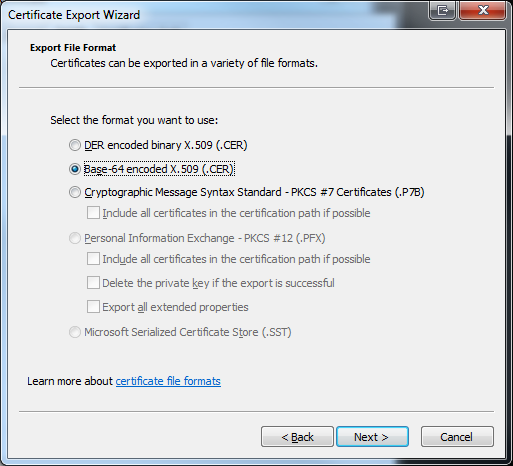

- #TORTOISEHG SSL SERVER CERTIFICATE VERIFY FAILED DRIVER#
- #TORTOISEHG SSL SERVER CERTIFICATE VERIFY FAILED VERIFICATION#
#TORTOISEHG SSL SERVER CERTIFICATE VERIFY FAILED DRIVER#
Upon doing so, the driver should be able to detect the trusted authority in the store, and accept the server's certificate.

Instead, the public key of the server's certificate issuing authority can be installed in the client machine's trusted certificate authority store.
#TORTOISEHG SSL SERVER CERTIFICATE VERIFY FAILED VERIFICATION#
If you'd like to turn off curl's verification of the certificate, use the -k (or -insecure) option. Another option does not involve setting the SSLServerCert property at all. If this HTTPS server uses a certificate signed by a CA represented in the bundle, the certificate verification probably failed due to a problem with the certificate (it might be expired, or the name might not match the domain name in the URL).Doing so should ensure that the driver will accept this certificate when it is provided by the server. This can take the form of either the literal contents of the certificate itself or a path to a local file that stores the certificate. Provided the server has a valid certificate, this certificate can also be supplied to this property as well.This method will at least be the fastest option to allow for successful SSL negotiation.

This is the least secure option but may be the only option if the server lacks a valid certificate at the time of connection. Doing so will force the driver to accept the first certificate provided to it. The simplest resolution for the error is to set the SSLServerCert connection property to "*".Depending on what is prioritized, one of the following solutions may be preferred over another: Whether the certificate issuing authority is trustedĪs it relates to CData products, the resolution for this error consists of three possible ways to address the SSLServerCert connection.Whether the name of the server host matches the certificate's CN.The factors considered in validation include, but are not limited to, the following: Once received, the client machine will then check the system to see whether various aspects of the certificate are valid. When establishing an SSL connection, the client machine is presented with a certificate from the server. Since the parameter has not been taken into account by the plugin yum-rhn-plugin. Then as a quick fix, we disabled sslverify in the configuration file /etc/yum.conf. Out of all our providers, this is particularly common when configuring a connection to a Splunk server for the first time. Initially, we removed cached packages and headers using the following command: yum clean all. Stancicle Please verify with your network team to see if there is a security protocol that is preventing cert verification. The customer was able to verify the certificate by using the external network (LTE Hotspot). This work is licensed under aĬreative Commons Attribution 4.0 International License.When connecting to a data source, it is possible to encounter SSL issues, such as the error described in this entry. We were able to verify this is a network issue. See Bitbucket’s post for a few more details. You should end up with something like this: Repeat with each server you connect to.Using the details from that message, add a hostfingerprints.Use a Mercurial command such as hg incoming that causes it to wail aboutĪ server’s certificate not being verified.Remove the cacerts line from your hgrc.Maybe this approach will work again in the future, once the wave of reissued certificates has broken, but for now there’s a straightforward solution: For internal servers HTTPS is primarily used for encryption. Regenerating the permissions file didn’t help. How do you disable HTTPS host authentication in TortoiseHG for internal self-signed certificates. Which, as dumb as it looks, is the recommended way to enable certificate checking through the system keychain. The culprit turned out to be this line in my ~/.hgrc: Git(hub) seemed to be fine, but any Mercurial commands involving the network - either trying to connect to Bitbucket or Kiln - would fail. I imagine the root cause is the whole OpenSSL mess and everyone reissuing their certificates, but it posed an immediate practical local problem: I couldn’t push to my source control. Gross as it is, the message is straightforward: the SSL certificate failed to verify. Routines:SS元_GET_SERVER_CERTIFICATE:certificate verify failed When I tried to push my last post to Bitbucket I received this ugly error: abort: error: _ssl.c:507: error:14090086:SSL


 0 kommentar(er)
0 kommentar(er)
